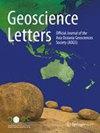Multi-year assessment of the impact of ship-borne radiosonde observations on polar WRF forecasts in the Arctic
IF 4.3
3区 地球科学
Q1 GEOSCIENCES, MULTIDISCIPLINARY
引用次数: 0
Abstract
To compensate for the lack of conventional observations over the Arctic Ocean, ship-borne radiosonde observations have been regularly carried out during summer Arctic expeditions and the observed data have been broadcast via the global telecommunication system since 2017. With these data obtained over the data-sparse Arctic Ocean, observing system experiments were carried out using a polar-optimized version of the Weather Research and Forecasting (WRF) model and the WRF Data Assimilation (WRFDA) system to investigate their effects on analyses and forecasts over the Arctic. The results of verification against reanalysis data reveal: (1) DA effects on analyses and forecasts; (2) the reason for the year-to-year variability of DA effects; and (3) the possible role of upper-level potential vorticity in delayed DA effects. The overall assimilation effects of the extra data on the analyses and forecasts over the Arctic are positive. Initially, the DA effects are the most apparent in the temperature variables in the middle/lower troposphere, which spread to the wind variables in the upper troposphere. The effects decrease with time but reappear after approximately 120 h, even in the 240-h forecasts. The effects on forecasts vary depending on the proximity of the radiosonde observation locations to the high synoptic variability. The upper-level potential vorticity is known to play an important role in the development of Arctic cyclones, and it is suggested as a possible explanation for the delayed DA effects after about 120 h.船载无线电探测仪观测对北极极地 WRF 预报影响的多年评估
为弥补北冰洋常规观测数据的不足,在夏季北极考察期间定期开展了船载无线电探空仪观测,并自2017年起通过全球电信系统播发观测数据。利用在数据稀缺的北冰洋上空获得的这些数据,使用极地优化版天气研究与预报(WRF)模式和WRF数据同化(WRFDA)系统开展了观测系统实验,以研究它们对北冰洋上空分析和预报的影响。根据再分析数据进行验证的结果揭示了:(1)DA 对分析和预报的影响;(2)DA 影响年际变化的原因;(3)高层位势涡度在延迟 DA 影响中可能发挥的作用。额外数据对北极地区分析和预报的总体同化效果是积极的。最初,DA效应在对流层中/低层的温度变量中最为明显,然后扩散到对流层高层的风变量。这种效应随着时间的推移而减弱,但在大约 120 小时后再次出现,甚至在 240 小时的预报中也是如此。对预报的影响因无线电探空仪观测点是否靠近高同步变率而异。众所周知,高层位涡在北极气旋的发展过程中起着重要作用,这也是在大约 120 小时后出现延迟 DA 效应的可能原因。
本文章由计算机程序翻译,如有差异,请以英文原文为准。
求助全文
约1分钟内获得全文
求助全文
来源期刊

Geoscience Letters
Earth and Planetary Sciences-General Earth and Planetary Sciences
CiteScore
4.90
自引率
2.50%
发文量
42
审稿时长
25 weeks
期刊介绍:
Geoscience Letters is the official journal of the Asia Oceania Geosciences Society, and a fully open access journal published under the SpringerOpen brand. The journal publishes original, innovative and timely research letter articles and concise reviews on studies of the Earth and its environment, the planetary and space sciences. Contributions reflect the eight scientific sections of the AOGS: Atmospheric Sciences, Biogeosciences, Hydrological Sciences, Interdisciplinary Geosciences, Ocean Sciences, Planetary Sciences, Solar and Terrestrial Sciences, and Solid Earth Sciences. Geoscience Letters focuses on cutting-edge fundamental and applied research in the broad field of the geosciences, including the applications of geoscience research to societal problems. This journal is Open Access, providing rapid electronic publication of high-quality, peer-reviewed scientific contributions.
 求助内容:
求助内容: 应助结果提醒方式:
应助结果提醒方式:


